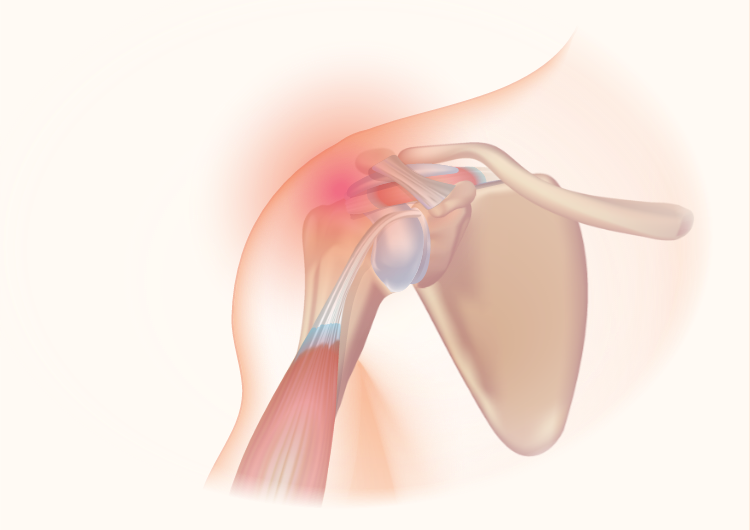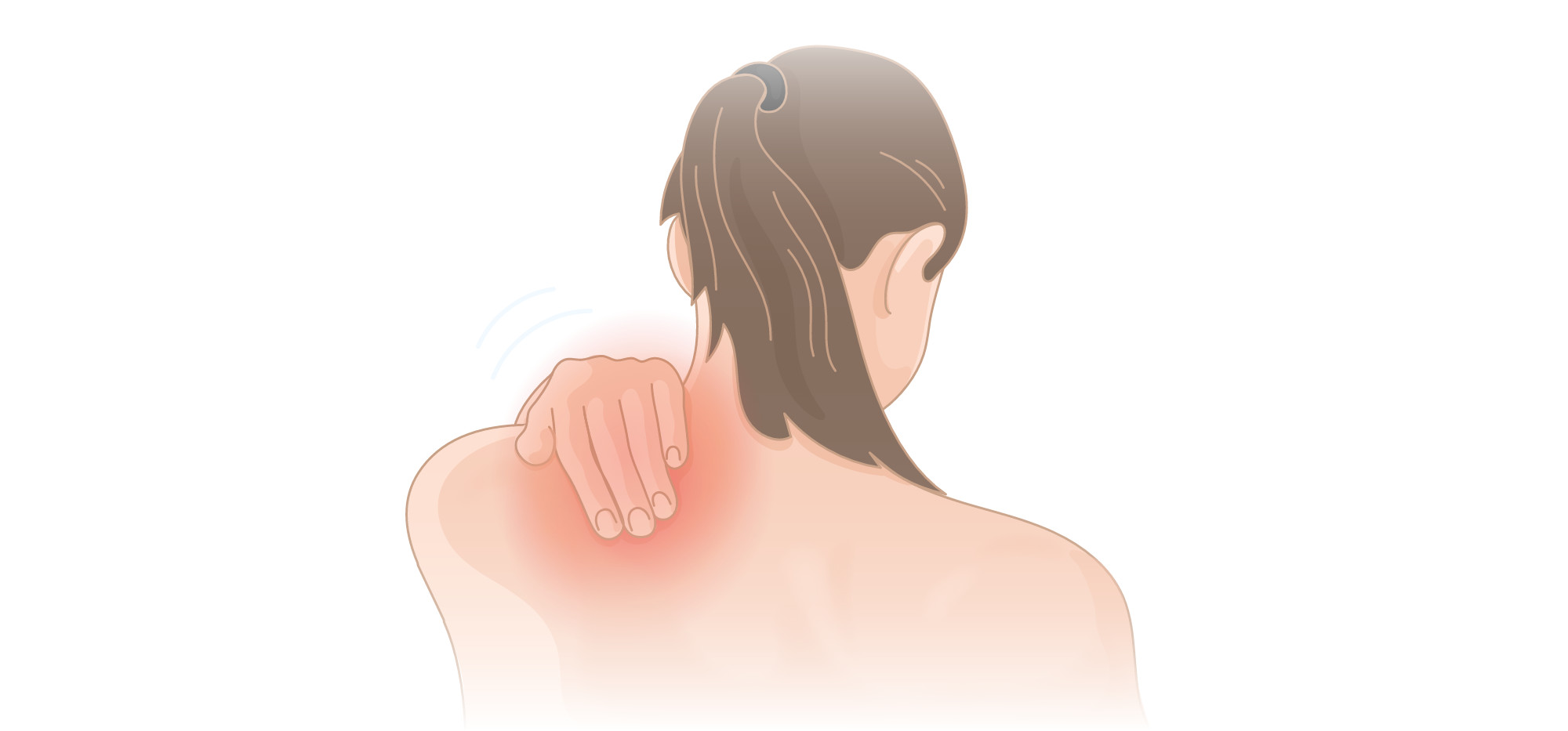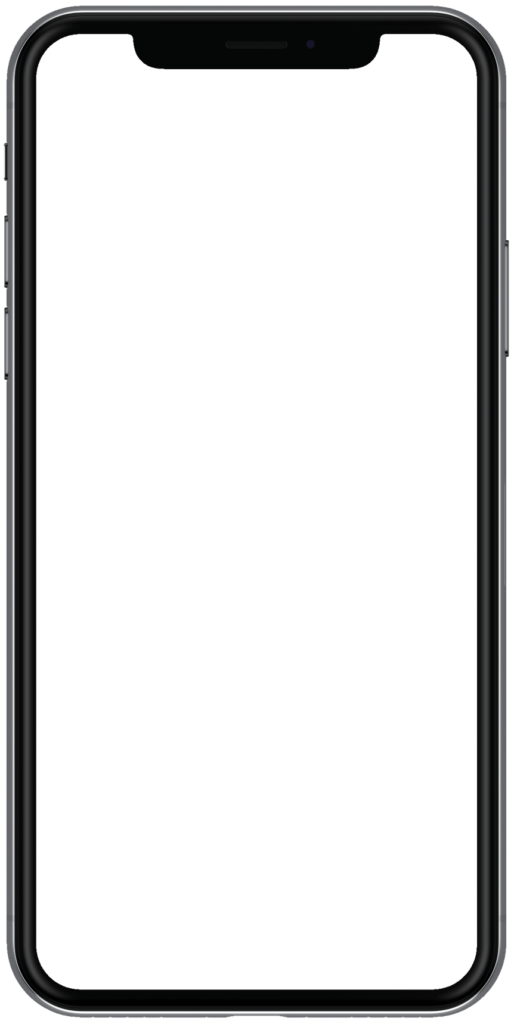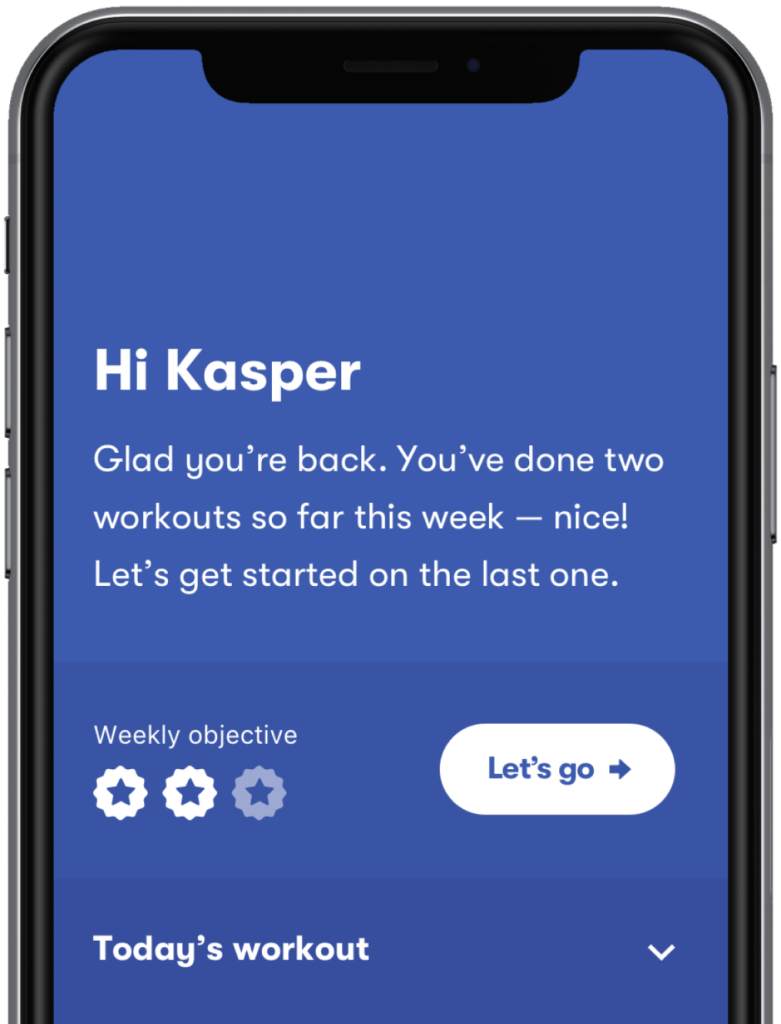Pain in the shoulder blade area is a common phenomenon. We guide you through the common causes, pain relief techniques and ways to prevent shoulder pain.
The area around or under your shoulder blade is achy. It’s sore. It may even get worse when you perform certain activities, such as turning your head or reaching for an object with your arm. Pain, in general, poses an irritating problem.
Yet, shoulder blade pain doesn’t have to take over your life. There are various treatments and methods that can ease your pain. However, your specific way to pain relief may depend on what is causing your discomfort or injury in the first place.
To help you find a solution that works for you, this article describes the most common causes of shoulder blade pain and how to relieve the pain.
Content
Common Causes of Shoulder Blade Pain
- Muscle Knots
- Muscle Injury
- Neck Condition
- Shoulder Condition
- Spinal Condition
- Shoulder Blade Fracture
- Nerve Inflammation
- Heart or Lung Conditions
- Widespread Pain (Fibromyalgia)
Managing Shoulder Blade Pain
- How Can You Reduce Your Shoulder Blade Pain?
- Preventing Shoulder Blade Pain
- Exercises for Shoulder Blade Pain
- Start Living Your Life – Free of Pain!
Common Causes of Pain Under the Shoulder Blade
There are many reasons you might be experiencing a nagging ache or soreness under the shoulder blades. It may hurt due to inflammation from injury or overuse. This is often noticeable at onset or gradually after you have been active. It may feel painful due to radiating pain from another body part or structure, such as from the neck, spine, or shoulder. Here are some of the most common causes.
1. You Have a Muscle Knot or a Tense Muscle
The most frequent reason for shoulder blade pain is a tense muscle or a muscle knot. The area around the muscle will feel tender to touch or tight. A way of thinking about it is imagining you pull on a loose thread in a sweater. This will create a hard knot in the fabric.
Why do the muscles become tense? It can come from doing too much, too soon, which is often the case in sports or exercise. For example, repetitive throwing may result in a muscle knot or tender spot under the shoulder blade. They may also develop as the result of pain in the neck and the shoulder.

These knots limit your functionality and impact your day-to-day life. You may find it hard to reach for an object on a high shelf or have difficulties twisting your torso.
Luckily, muscle knots are often easily treated with a massage technique known as myofascial release. Myofascial release is where moderate pressure is applied to the spot to release the “stuck” tissues. A popular example of this technique is foam rolling (see How Can You Reduce Your Shoulder Blade Pain?).
2. You’ve Injured a Muscle
A frequent and common reason for shoulder blade pain is a muscle strain, also known as a pulled muscle. This may result from overuse or stress on the arms or upper back.
A muscle may also become strained if you’ve slept in a new bed, a new position, or even recently started a new exercise program. Bad posture may also play a part. When you slouch forward, it places stress on the muscles in the back. As a result, you may feel pain under your shoulder blade.
3. You Have a Condition Affecting Your Neck
Arthritis of the neck may result in local neck pain, as well as shoulder blade pain due to tense muscles. Spinal stenosis, a narrowing of the spinal cord, a pinched nerve in the neck spine, due to a slipped disc, or arthritis, and problems with the discs in between the bones of the spine may also cause radiating pain in the shoulder blades.
4. You Have a Condition Affecting Your Shoulder
A rotator cuff tear or a frozen shoulder may lead to pain around the shoulder blade. If you’ve recently experienced a shoulder injury, it may also be causing your shoulder blade pain.

5. You Have a Condition Affecting Your Thoracic Spine
The thoracic spine is the part of the spine that sits between the shoulder blades (see the illustration below). Arthritis in the thoracic spine may cause pain around your shoulder blades, either because of radiating pain, or tense muscles.
In these cases, and many others, exercise, including stretching and strengthening, may help alleviate your pain and provide adequate support to the areas of the body that need it.

6. You’ve Fractured Your Shoulder Blade
A fractured shoulder blade is usually obvious. You’ll experience severe pain at the onset of the injury. It is often caused by a direct blow or trauma, such as a car accident. When this happens, it’s critical to seek out immediate medical attention. Avoid using the affected side. A sling may help until you can get the treatment you need.

One condition that increases the risk of shoulder blade fractures is osteoporosis. This is when the body loses bone tissue, resulting in lower bone density. This makes the bones brittle and easy to break or injure. However, if you have osteoporosis, strength training goes a long way when it comes to strengthening the body and its joints.
7. A Nerve in the Shoulder Blade Region has Become Inflamed
Such inflammation may result from carrying a heavy load on your shoulder, for example, a heavy backpack, or from infections. It can lead to widespread pain around the shoulder blade, as well as impaired muscle function. This can create a condition where the shoulder blade is sticking out from the back, instead of being pulled close to the chest.
8. You Have a Specific Heart or Lung Condition
If your left shoulder blade is hurting, it could be a sign of certain heart conditions, such as pericarditis or aortic dissection. Lung cancer may further manifest as shoulder blade pain. If you have any other symptoms, such as shortness of breath, dizziness, or chest pain, seek emergency medical attention. These are not symptoms you want to ignore. Such conditions could lead to a life-threatening situation. Go to the nearest emergency room.
9. You Have Widespread Pain (Fibromyalgia)
If it isn’t a new pain and the pain comes and goes, you may have a more chronic condition, such as fibromyalgia, which is a common condition affecting 3-6% of people. It is categorized by widespread pain and fatigue. It may pose similar symptoms to that of a muscle strain. If you suspect you may have fibromyalgia, book a consultation with your doctor.
How Can You Reduce Your Shoulder Blade Pain?
For most forms of shoulder blade pain, you can use the following guidelines to help relieve your pain and get back to your regular activities.
1. Exercise
It should be noted that in most conditions, exercise is the treatment of choice, for alleviating your pain. Exercise builds strength to help support the injured area. Stretch exercises help relieve tension in the muscles. However, exercise should not be continued if pain worsens. Err on the side of caution. Go slow. The preventative exercises in the following section offer examples of exercises you may try to bounce back after shoulder pain.
Don’t know where to start? Injurymap’s app gives you the right exercises at the right time. Try the app for a speedy recovery.
2. Slow down
Does your pain get much worse when you perform certain movements or activities? It’s likely a good idea to give yourself a break. Avoid the activities causing pain for 24 – 48 hours. Give your body time to heal and rest – especially if the pain may be the result of overuse.
Surprisingly, your body is fairly capable when it comes to healing itself. It may just need the time to do so. For instance, if the pain has occurred after a particularly intense workout, your body may need time to adapt. Likely, micro-tears have occurred in the muscle tissue.
The body will heal tears, as well as adapt the muscle tissue to withstand similar future loads. After a couple of days, try to ease back into your regular activities, but reduce the weight and pressure on the muscles, and the length of your activity. If the pain continues, it may be a good idea to seek out some professional advice, such as that of a sports medicine specialist or a rheumatologist.
3. Try out cold or heat therapy
Ice is a quick way to relieve pain. Wrap the ice or cooling device in a wet cloth before applying it to your skin. Apply the cold device for 15-20 minutes. Leave about 45 minutes between applications. Ice or cold reduces blood flow to the affected area. By doing so, inflammation and swelling may be reduced. As a result, you feel less pain.
Some individuals prefer heat over cold. Go with what feels best for you, or alternate between them. Heat, in particular, may offer relief, if your muscles feel tense. Heat promotes blood flow in the applied area and also causes the local muscles to relax.
4. Take over-the-counter pain relievers
Over-the-counter pain relievers are a quick route to reduce inflammation and pain. Aspirin, ibuprofen, naproxen (in the US), and paracetamol (acetaminophen in the US) are all viable options.
Make sure not to use these medications for longer than 10-14 days. Long-term use is associated with gastrointestinal issues and other adverse effects. Most of these medications are intended for short-term use.
If your pain or condition doesn’t improve in due time, get it checked out by your doctor or a physical therapist. Further, if you’re continuing heavy exercising during this time, be careful! It may dull your perception of your pain since exercise stimulates your body’s natural pain relievers.
5. Give yourself a massage
Or better yet, book a massage. If this isn’t an option, there are easy home remedies you can try. A foam roller or massage ball is your best bet. Roll the foam roller or ball under your shoulder blade until you find a tender spot. Once you find the spot, slowly roll side-to-side, up-and-down, or in a circular pattern. Do this for a minute or more. It should feel like a good pain – as if you’re releasing something. Feel free to use this method once or even twice a day.
6. Acupuncture May Help
Acupuncture has been used for centuries. It works by inducing a reflex that makes muscles relax. This release of tension may lead to pain relief. Some people are very responsive to this technique.
7. Do none of these work for you? It’s time to consult with the pros.
If none of these offer pain relief, book an appointment with your doctor or physical therapist. They will assess your condition, diagnose it and guide you through a treatment plan unique to you and your situation.
Preventing Shoulder Blade Pain
After you’ve found an efficient way to relieve your pain, the next step is prevention. How can you prevent this pain from happening again? The main route to prevention is exercise. Strengthening and stretching the vulnerable area or the previously injured area will help you avoid pain down the road. Make sure you slowly ease into exercise.
Exercise regularly, and keep in mind, that the key to long term relief, is to keep training, which you often will have to do for many months. Strengthening exercises ought to be done two to three times a week, with one – two days pause. Stretching exercises can be done daily.
Start with once every two days. In a week or so, bump it up to twice every two days. In about 4-6 weeks, try doing these exercises 2-3 times a day every other day. The following exercises you can find in Injurymap. The app takes the guesswork out of exercising. It helps you ease into it and guides you through every step.



